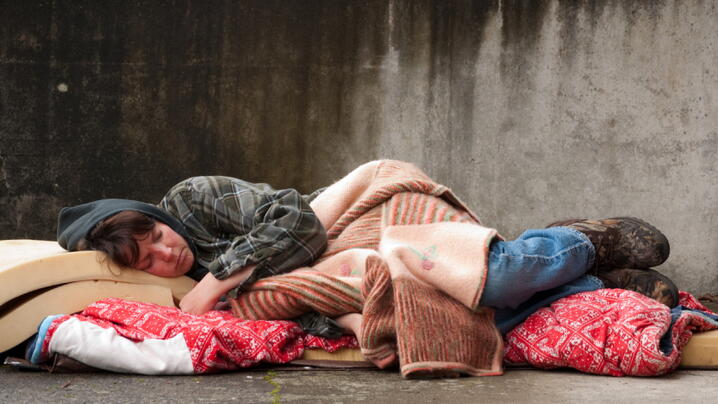
Perhaps no other author has penned more perceptive language on the challenges of homelessness during the winter months than Charles Dickens. In Oliver Twist (Chapter XXIII), he writes:
Bleak, dark, and piercing cold, it was a night for the well-housed and fed to draw round the bright fire, and thank God they were at home; and for the homeless starving wretch to lay him down and die. Many hunger-worn outcasts close their eyes in our bare streets at such times, who, let their crimes have been what they may, can hardly open them in a more bitter world.
Today’s local governments and their community partners have capacities and programs to blunt the “bleak, dark, and piercing cold” for many homeless populations; however, those efforts face major challenges in the winter weather months of 2020-21. With homelessness a continuing crisis, compounded with the surging pandemic and cold weather advancing or already in place across the northern hemisphere, jurisdictions and partnering organizations might want to take a final look at the strategies and programs they use for warming places and shelters. Some things to consider:
-
Do we know the population of potential shelter customers? The economic impacts of the pandemic have caused an increase in homelessness. Many communities are struggling to understand how much their local homeless population may have increased as the traditional methods of “point in time” counting may not reveal the growth curve. Better understanding on how the need has changed in 2020 is an important exercise to help guide planning for capacity, volunteers, staffing, and material needs.
-
Are our traditional facilities still available in a pandemic? Cities, towns, and counties might offer not only homeless shelters, but also libraries, recreational and senior centers, town halls, and other public facilities as options for warming centers. In normal times, they might recommend people go to a mall or indoor shopping facility. Local governments might consider an asset review to know what facilities remain available for what use and under what COVID-19 restrictions.
-
Is there additional space that can be procured for sheltering and warming? With reduced market demand for hotel and motel space, there may be opportunities for short-term procurements to house homeless people or families during periods of dangerous cold weather. With capacity limits in many places, non-congregant space may be a high priority as COVID restrictions limit capacity in congregant facilities. Managers might also want to ask if there are other nontraditional sources of shelter that ensure CDC recommended social distancing, since some surge organizations in the community or region might opt out because of the pandemic.
-
Do we have the necessary PPE? As has been said so often during 2020, managers might want to double check with their community’s homeless agencies and providers to ensure that the necessary PPE is available to meet the needs of the cold weather season. Many locations require that patrons of shelters always wear a mask except when eating and sleeping.
-
Do we have access to the number of volunteers we need? Stay at home orders, fear of getting sick, and other factors are causing a decline in individual and organizational volunteerism for many needs, including homeless shelters and warming centers. Leaders might want to think about alternative strategies for staffing facilities and engaging volunteers, particularly those that are younger and less vulnerable to the virus’s impacts. Volunteer connectors, such as the United Way, the Salvation Army, and others might be able to aid in recruitment if necessary, to augment other efforts.
-
Do our community’s warming and sheltering facilities have adequate stockpiles of necessities? Donations of food, clothing, blankets, and toiletries are often the logistics plan for community or nonprofit run shelters and centers for street people. What is the plan when the backstock of necessities gets low or empties out? The CDC has guidance on the operation of food pantries and similar services during a pandemic.
-
Do we understand the public health guidance, licensing requirements, and reimbursement guidelines from the state and the federal government? The CDC has produced guidance for shelters and centers that includes additional information about cold weather operations. FEMA has also produced guidance on potential reimbursements for temporary or alternative sheltering that a community might need because of the pandemic. As has been done for other emergency needs, like childcare and learning support, communities might want to explore what leeway they have for temporary licensure of facilities to serve as homeless shelters or warming centers.
Before the night becomes even more “bleak, dark, and piercing cold,” local governments might want to do a final check of their community’s capacity to meet a revamped need for shelters and warming centers as wintertime sets in.
New, Reduced Membership Dues
A new, reduced dues rate is available for CAOs/ACAOs, along with additional discounts for those in smaller communities, has been implemented. Learn more and be sure to join or renew today!
